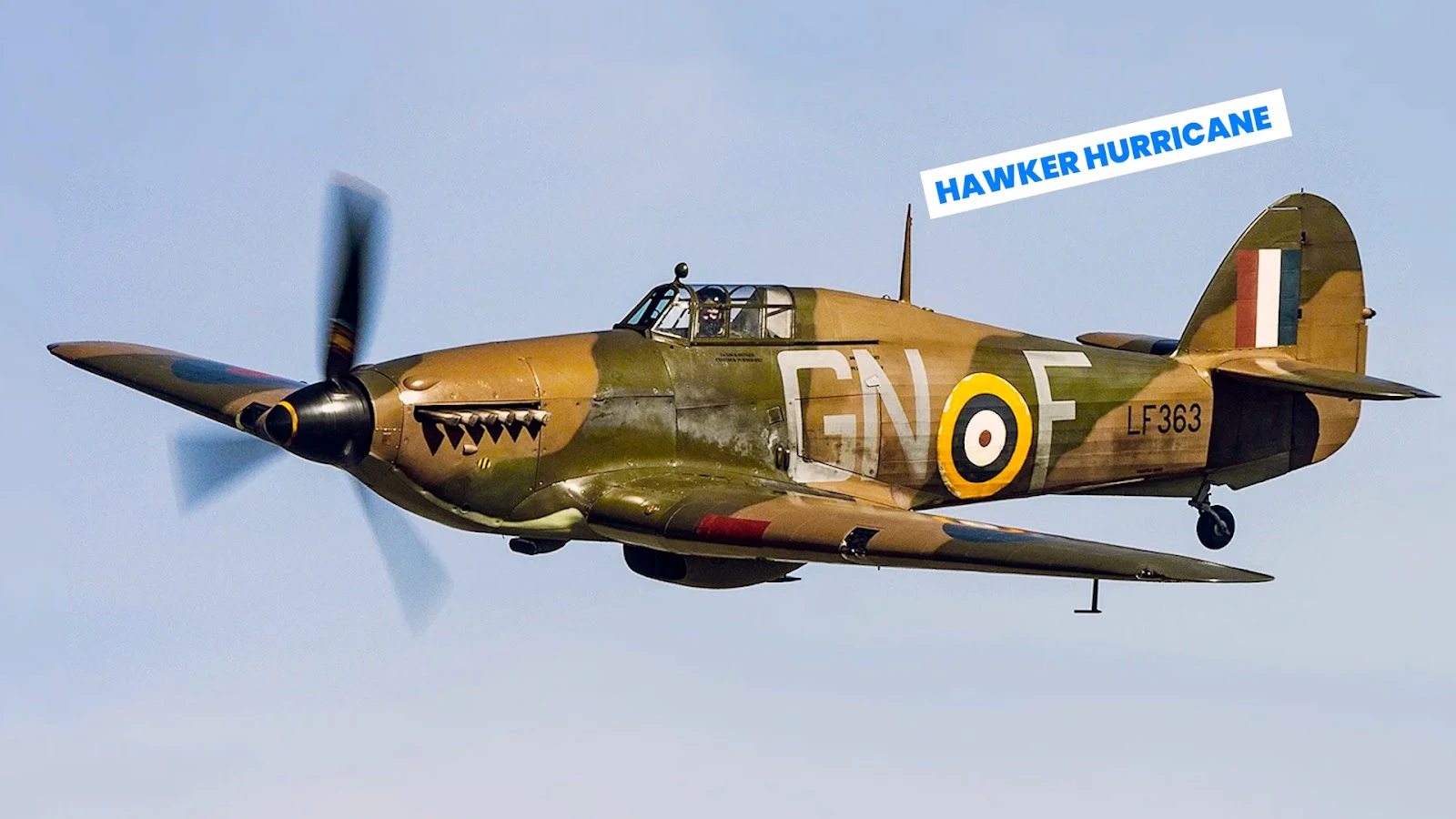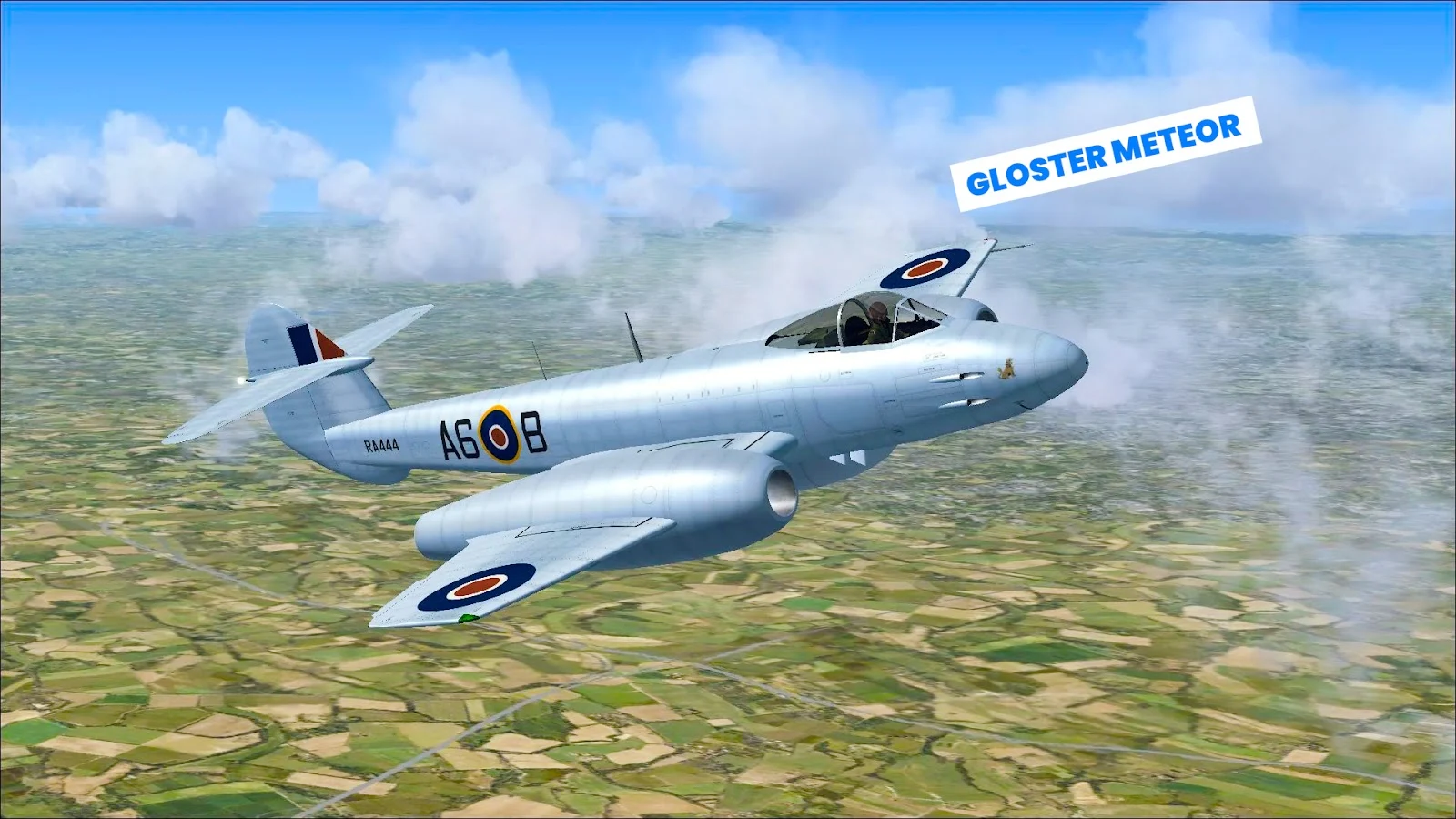Top 5 British Aerospace Warplanes That Made History

British Aerospace has long been a powerhouse in the world of military aviation. Its legacy spans from World War II heroes to Cold War speed demons and revolutionary vertical takeoff jets. These aircraft are not just machines—they are national symbols, technological marvels, and cornerstones of air power history. Here are five of the most iconic British military aircraft that shaped the skies and defined eras.
1. Supermarine Spitfire – The Symbol of British Resistance
Master of the Dogfight

The Supermarine Spitfire earned immortal status during the Battle of Britain, defending the skies against overwhelming Luftwaffe forces. Designed by R.J. Mitchell, the Spitfire combined cutting-edge aerodynamics with the power of a Rolls-Royce Merlin engine. Its elegant elliptical wings were not just aesthetically pleasing—they enhanced agility and roll rates, giving RAF pilots the edge in air combat.
This fighter's responsive controls and forgiving handling made it a favorite among pilots. Its exceptional climb rate and tight turning radius helped British forces fend off Nazi Germany’s aerial assault in 1940. Ground crews appreciated its durability and ease of maintenance, crucial factors when replacement aircraft were hard to come by.
More than 20,000 Spitfires were built, including naval variants known as Seafires. Its widespread adoption extended to foreign air forces, including limited use by the U.S. during World War II.
Spitfire Specifications:- Length: 29.1 ft (8.90 m)
- Wingspan: 36.1 ft (11.02 m)
- Max Speed: 365 mph (587 km/h)
- Range: 991 mi (1,595 km)
- Service Ceiling: 36,500 ft (11,125 m)
2. Hawker Hurricane – The Unsung Hero of the Battle of Britain
Tough, Versatile, and Reliable

Though often overshadowed by the Spitfire, the Hawker Hurricane was responsible for more than half of the Luftwaffe kills during the Battle of Britain. Its straightforward construction, using fabric-covered wings and a metal frame, made it quicker and cheaper to produce—a vital attribute for wartime Britain.
The Hurricane was a true multi-role platform. While it was slower and less nimble than the Spitfire, its ability to carry heavy armament made it ideal for close air support, anti-shipping, and ground attack roles. Its rugged design allowed it to absorb damage and return safely—a trait that won the trust of countless RAF pilots.
Hurricane Specifications:- Length: 32.25 ft (9.83 m)
- Wingspan: 40.0 ft (12.19 m)
- Max Speed: 340 mph (547 km/h)
- Range: 600 mi (966 km)
- Service Ceiling: 36,000 ft (10,973 m)
3. Gloster Meteor – Britain’s First Operational Jet Fighter
Pioneering Jet Combat

The Gloster Meteor marked a new chapter in aviation history as the first operational Allied jet fighter. Introduced in 1944, it was powered by twin turbojet engines, offering unparalleled speed and altitude performance compared to piston-engine aircraft.
Although its early missions focused on intercepting German V-1 flying bombs, the Meteor’s entry into service signaled the dawn of jet-powered air combat. With its superior thrust and performance, it laid the foundation for post-war jet development in Britain and beyond.
Meteor Specifications:- Length: 41.2 ft (12.57 m)
- Wingspan: 43.0 ft (13.11 m)
- Max Speed: 600 mph (966 km/h)
- Range: 600 mi (966 km)
- Service Ceiling: 43,000 ft (13,106 m)
4. English Electric Lightning – Britain’s Supersonic Interceptor
Speed Demon of the Cold War
The English Electric Lightning was a revolutionary Cold War interceptor and the first British aircraft capable of exceeding Mach 2. Its innovative twin-engine, stacked configuration reduced drag and boosted acceleration, allowing it to reach enemy bombers within minutes of detection.

Pilots were in awe of the Lightning’s blistering speed and rapid climb rate, although its limited range and armament required precise mission planning. It served primarily in air defense roles, acting as the UK’s front-line shield against Soviet threats during the Cold War.
This aircraft remained one of the most thrilling to fly in RAF service, with its vertical takeoffs and supersonic dashes earning it a place in aviation lore.
Lightning Specifications:- Length: 52.2 ft (15.91 m)
- Wingspan: 34.1 ft (10.39 m)
- Max Speed: Mach 2.0 (1,300 mph, 2,092 km/h)
- Range: 800 mi (1,287 km)
- Service Ceiling: 60,000 ft (18,288 m)
5. Hawker Siddeley Harrier – The Jet That Could Hover
Revolutionizing Close Air Support
Perhaps no British military aircraft is as instantly recognizable or as revolutionary as the Hawker Siddeley Harrier. As the world’s first operational vertical/short takeoff and landing (V/STOL) aircraft, the Harrier allowed pilots to take off from short fields, roads, or aircraft carriers without catapults.
Its vectored-thrust engine enabled it to hover, take off vertically, and maneuver in ways conventional aircraft could not. This made it an exceptional choice for close air support, particularly in expeditionary operations.

The Sea Harrier variant proved its worth in the 1982 Falklands War, achieving air superiority despite being outnumbered and facing formidable Argentine opposition. The Harrier served with distinction in multiple nations, and its upgraded AV-8B variant remained in U.S. Marine Corps service well into the 21st century.
Harrier Specifications:- Length: 46.5 ft (14.17 m)
- Wingspan: 25.3 ft (7.70 m)
- Max Speed: 730 mph (1,175 km/h)
- Range: 2,300 mi (3,701 km)
- Service Ceiling: 51,000 ft (15,545 m)
Conclusion: A Legacy That Shaped Global Air Power
British Aerospace’s contributions to military aviation are nothing short of extraordinary. From the piston-powered dogfighters of World War II to the pioneering jets and V/STOL marvels of the Cold War and beyond, these five aircraft illustrate Britain’s unwavering commitment to air superiority and innovation.
These legends of the sky continue to inspire, reminding us of the courage, ingenuity, and technical brilliance that define British military aviation. Whether you’re an aviation enthusiast or a military historian, the legacy of British Aerospace lives on through these iconic machines.
Frequently Asked Questions (FAQ)
What is the most famous British military aircraft of all time?
The Supermarine Spitfire is widely regarded as the most famous British military aircraft. It played a pivotal role in the Battle of Britain during World War II and became a symbol of British resistance and engineering excellence.
What was the first British jet fighter to enter combat?
The Gloster Meteor was the first British jet fighter to see combat. It entered service in 1944 and was the only Allied jet aircraft to engage enemy targets during World War II.
How did the Hawker Hurricane contribute to the Battle of Britain?
While the Spitfire often gets the spotlight, the Hawker Hurricane was responsible for more than 60% of Luftwaffe kills during the Battle of Britain. Its durability and ease of production made it a workhorse of the Royal Air Force.
What makes the English Electric Lightning unique?
The English Electric Lightning was unique for its vertical twin-engine configuration and its ability to reach speeds over Mach 2. It served as a Cold War interceptor capable of rapid response against high-altitude threats.
How does the Harrier jet take off vertically?
The Hawker Siddeley Harrier uses a vectored-thrust engine system that redirects jet exhaust downward to achieve vertical takeoff and landing (VTOL). This allows it to operate from short runways or forward bases, making it ideal for close air support.
Are any of these British military aircraft still in service today?
Most of these aircraft have been retired, but variants of the Harrier remained in service with the U.S. Marine Corps until recently and will be phased out by 2026. Some Spitfires and Hurricanes are still flown in airshows and heritage flights.
What impact did British Aerospace have on global aviation?
British Aerospace (now part of BAE Systems) has had a profound influence on global aviation through innovations in jet propulsion, VTOL technology, and air combat systems. Its aircraft have served in multiple nations and inspired generations of aerospace development.

Posting Komentar